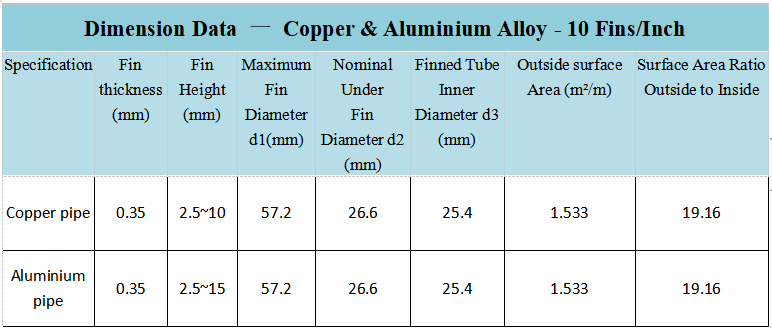











If you want to know more demension datas, please contact us.
Product introduction:
Copper-aluminum composite finned tube is a copper-aluminum composite tube that is rolled out of fins after compounding. It has the characteristics of close combination, small thermal resistance, good heat transfer performance, high strength, small flow loss and strong corrosion resistance. It is not easy to be deformed in the case of long-term cold and hot work and long working life.
The whole rolled fin is smooth without burr, no wrinkle, easy to clean, in the heating and air conditioning engineering wet cooling is easy to remove the condensation on the outside surface of the fin, in the heat exchange heating and other occasions not easy to dust, fouling.
Product introduction:
The processing technology of cold rolled finned tube of steel and aluminum is made from aluminum tube and steel tube into bimetallic composite tube, and then the finned tube is formed after the mechanical cold rolled tube.
Based on the physical characteristics of aluminum tube, the tube with steel tube as the core is made into a finned tube which is closely combined with the cold rolled aluminum fin.
The composite finned tube has the following characteristics:
1. High heat transfer performance, low contact resistance;
2. The fin has a large contact area with the tube, which is close and reliable;
3. Good corrosion resistance and stable long-term service performance;
4. The fin has good rigidity and is not easy to deform.
It is widely used in steel, petroleum, chemical, machinery, shipbuilding, power station, hospital and food industries.
Bimetallic Finned Tubes Features
● To improve the heat transfer efficiency in the effective space.
● To Reduce the required installation space for the required heat transfer surfaces.
● To lower equipment cost while having higher operational reliability.
● The running cost is lowered due to lower tube side pressure drop.
● The rigidity of tube is increased, which improves the seismic resistance of the tube.
● Enhancement of heat transfer, reduction on flow resistance and metal consumption.